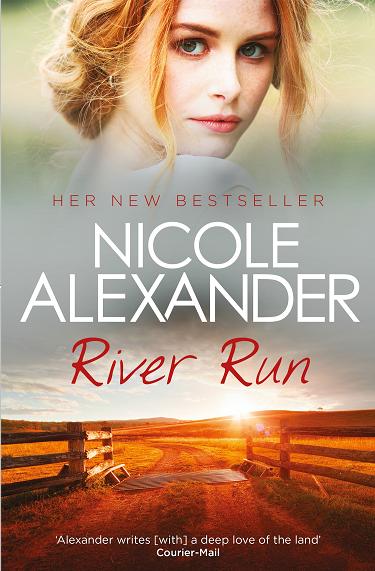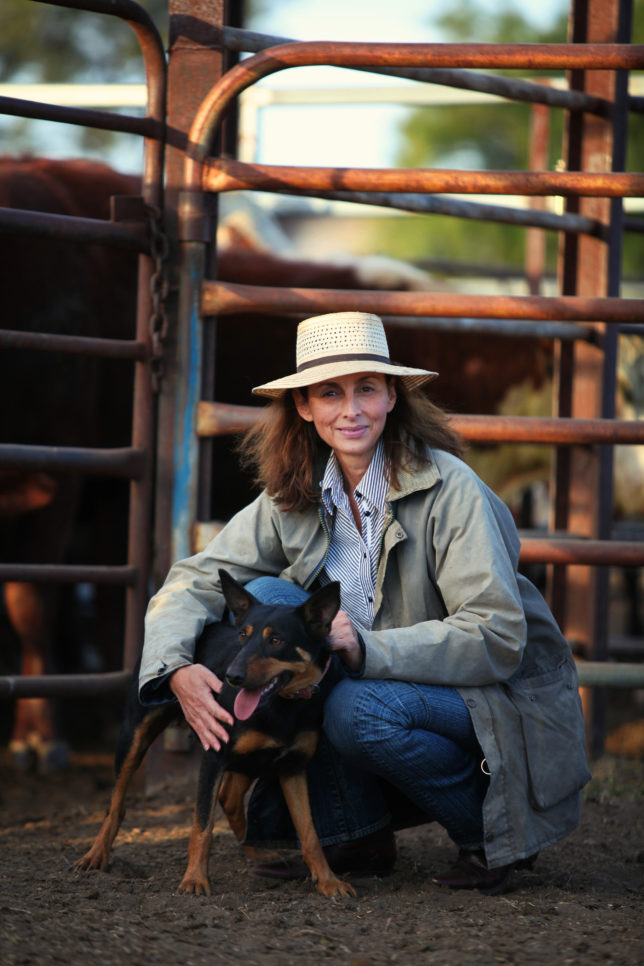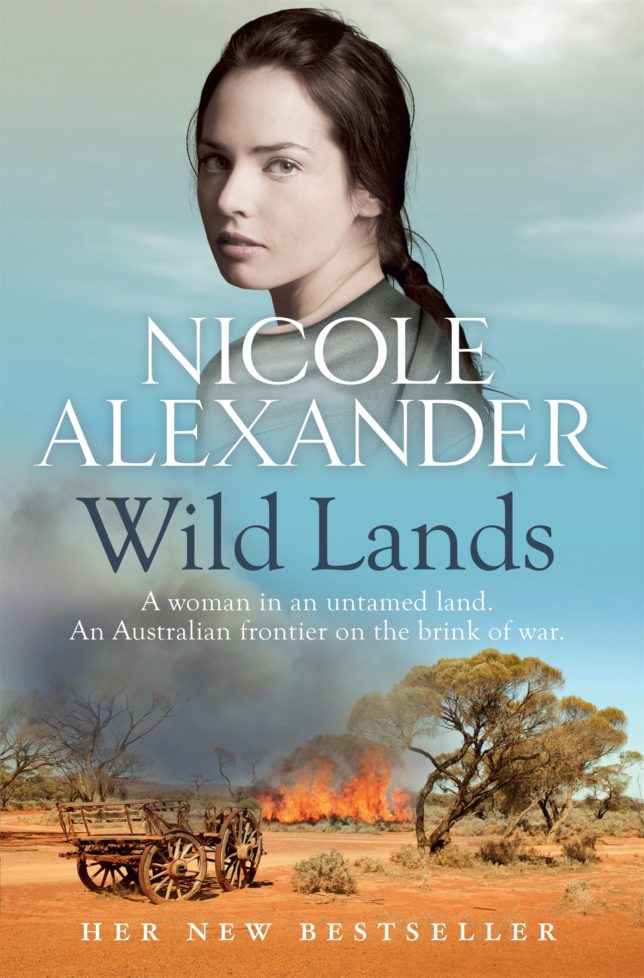
Best selling author Nicole Alexander holds a unique place in the book world as the only female author in the rural literature genre making Australian rural history accessible through her popular fiction. Dividing her time between writing and managing her family’s agricultural holdings, passed down through the generations since 1893, Nicole’s novels are rich with historical detail and often inspired by anecdotes from the Alexander family archives.
Author of six novels to date, The Bark Cutters, A Changing Land, Absolution Creek, Sunset Ridge, The Great Plains and Wild Lands, her seventh, River Run, will be released later this year.
Ahead of the release of her next novel, AU Reviewer Jodie Fairclough had a chat with Nicole about what to expect from the upcoming book, and the inspiration behind her award-winning body of work.
What can you tell us about your upcoming book, River Run?
In the 1940s, there was concern in some parts of the Australian countryside that, due to communist influence, there may be an invasion. On hearing this, my then ten-year- old father decided to ready himself for the imminent attack. Stealing tinned food from the pantry, he rode his trusty horse Garnet to the creek, to store the food in a tree that would provide the perfect vantage point to defend his family, and their property, from this threat. After just a few days, he realised nobody was actually going to invade, and his self-imposed sentry duty was over.
It was this story from my father’s childhood that sparked the premise for River Run. What if his adventure hadn’t ended so uneventfully? What if something had happened? What sort of impact would it have had on the family? I then set the novel on a sprawling sheep station in 1951 during the heady years of the wool boom. A golden era in Australia’s history.
Have you always wanted to write?
My parents are great readers and that love of a good story was instilled in us from an early age. Our family homestead, Murki Station, had many rural based paintings. I loved them all from an early age. Every artwork told a story; of quiet waterholes, sun-tinged gum-trees and drovers riding off into the scrub. As a child I would sit in front of these works and concoct stories based on the subject matter. By the time I’d reached my teens and read Hemingway’s The Old Man and the Sea, I knew I wanted to be writer.
Do you ever dabble outside of the rural literature genre? Is there another genre or writing style you’d love to try your hand at?
I started writing when I was about fifteen and became serious after I completed university. I wrote poetry, short stories, travel articles, genealogy pieces and along with quite a few rejection slips, I had the good fortune to have the majority of them published. I had a volume of poetry published in 2008, which I remain particularly proud of.
You’re noted for being a female in a fairly male dominated world, both in your choice of genre and in your day-to- day life. How much do your own experiences influence what you’re writing?
My early novels reflected some of my experiences working on the land but I now concentrate on more historical narratives set in rural Australia. I do love the land and our rich history and I try and celebrate pastoral Australia and all who have played a part in it, including Australia’s First People. Our history is so diverse and encompasses so much more than convicts, the military and early Sydney.
Having been born into a generational grazing family my background certainly ensures a high level of authenticity as not only do I have first-hand experience of rural life but I can also delve into our family archives for my primary research – old paddock books and station diaries, mail-order catalogues from the 1930s, that sort of thing.
As a grazier and as someone who works on the land, a role traditionally associated with men, have you come up against any discrimination because of your gender? Do you think there is still a glass ceiling of sorts in that industry?
When I first returned to the family property some twenty years ago, I’d been working both in Sydney and abroad in mainly corporate roles. What surprised me most was that the gender bias back then came from both men and women. Some of the women in the district were surprised at my decision to work in the family business. They thought I should be settling down, marrying, having a family and then supporting my husband ‘out in the field’. In comparison I found the majority of men I knew, neighbours and the descendants of the older families in the area were quite supportive of my decision, and respectful of it.
On-farm it was a slightly different scenario. Those who worked as part of the team, which at times could be a mix of full-time, part-time and seasonal contractors, didn’t expect me to last long and a couple of the men actually told me that to my face. I had a lot to learn. Knowing that the men and to some extent my father, wouldn’t see me as able to contribute in any meaningful way or of being capable of running the business in the longer term (if required), unless I could do what they could do, I adopted a ‘hands-on’ approach. I learnt everything I could where physically possible. I also had the benefit of being taken under the wing of a stockman who’d been part of the business on and off for forty years. Of course that didn’t stop the asides or the odd snigger, but my persistence and patience paid off. It was with reluctance that some members of our team eventually realised that I wasn’t going anywhere. Terminating a long-term staff member in my father’s absence was a turning point for me. One morning, a week or so later I simply got up, went to work and found myself treated the same as everyone else.
I began to notice a difference in the bush about ten years ago. There were more young women either returning to family businesses or choosing a rural vocation. The question of acceptance has been replaced by a ‘why not?’ attitude by both men and women. These days I’m treated as an equal although it is still a bit of a boys club. My main difficulty was proving to my ultra conservative father that a girl was just as capable of managing a rural holding as a boy. Although he’s grateful for my involvement (I’m the only one of four children who returned home) it’s only his age that has led to a softening of his attitude. He never questioned my ability, but rather the suitability of it as a role for his elder daughter.
Do you consider your writing a way to combat that sort of prejudice? A way to celebrate a genuine love and respect for the land, regardless of gender?
My female characters are, in the majority, reasonably strong individuals. Their strengths and weaknesses, their personalities, are by necessity moulded by the environment they live and work in. Being involved in agriculture requires a certain persistence. We are continually subjected to the vagaries of both the marketplace and the weather. However while my earlier works may have reflected my own early farming life, they rarely do now. I would hope that my novels show a sense of continuity and love for the land. I always try and represent the land as a living, breathing entity, a character in its own right. In turn I hope my human characters reflect that genuine love for the environment that they choose to live in.
Your family’s attachment to your property and to the land goes back over one hundred years. There must be plenty of sources of inspiration for you, with such a rich historical legacy to embrace! Can you tell us a little about some of the stories and histories that have inspired you?
All of my novels are based on a story or anecdote that has been passed down through the generations.
Last year’s novel, Wild Lands, used my own family’s settlement experience as the premise. My great-grandfather first settled our property in 1893. He chose a site for the homestead near the banks of the Whalan Creek, a major waterway in our area and quickly pegged out a simple timber hut. The men spent their days cutting timber, erecting fences and shepherding the sheep that they overlanded from a previous property to the south-east. The long days and nights were broken by the monthly arrival of the postal and supply rider who brought stores and mail to the settlers. One of the items that arrived in that first year was a copy of Alexander Duma’s The Count of Monte Cristo. The novel arrived in a saddle-bag on the back of a packhorse wrapped in brown paper and twine and I imagine him reading by a flickering candle, sitting beneath a fat, lazy moon the bush stretching out around him and this unending silence.
When you’re dealing with rural and regional Australia, there’s bound to be certain issues regarding the original landowners, and the level of cultural sensitivity that surrounds that. It’s an issue that’s particularly prevalent in Wild Lands, but what else can you tell us about covering such a divisive and difficult subject matter – especially as someone from a white farming family? How far can you celebrate a land that is so politically and culturally contested?
I celebrate the history and peoples of the period I’m writing about and I do that as authentically and realistically as possible, knowing and understanding the long association that has existed between my family and the Indigenous people that have been part of the team over the generations on our property. I consulted a number of Elders when researching Wild Lands and the manuscript was read by a member of the Indigenous community to ensure the work was unbiased. It is not the first time I have turned to Elders for advice and I’m sure it won’t be the last.
I have always included Indigenous Australians in the majority of my works. Why would I not? They are part of the rich tapestry of Australia’s culture and not to include them is to only give a partial glimpse into rural Australia at any given time.
I do wonder at the negative commentary I hear in the media at times when it comes to novelists ‘stepping into the shoes’ of Indigenous Australians. The Aboriginals I speak to are appreciative of being included in my novels and agree that they should be represented in rural stories. As one Elder, Mrs Noeline Briggs-Smith, said to me last year at the launch of Wild Lands: “You whites and us blacks have been working side-by- side for years and we were here a bloody sight longer before you lot came. Why shouldn’t you be writing about us?”
As an art history/history graduate, I was really excited to hear about your latest venture – a blog focusing on Australian rural art and the artists associated with it. What inspired you to start writing about these artists and their work? Do you have any particular favourite artists or pieces you’d like to share with us?
I love art in all its forms. I have such admiration for its practitioners. A friend of mine from Dubbo NSW, Mark Horton, was shortlisted for the Archibald last week and I could have jumped for joy when I heard the news. I have always loved Australian rural art. It’s a passion that stems from growing up in the bush and having rural artworks hanging in the homestead.
My favourite is a large tinted photograph taken in 1894 of the first blade shearing on our family property. My grandfather is shown as a small boy sitting on a wool bale and his father (my great-grandfather) stands next to him, alongside a number of shearers, in action, within a bark hut. I guess this is our equivalent of a Tom Roberts.
My favourite artists are Frederick McCubbin and Tom Roberts and the artists covered in the twice monthly blog include: Frederick McCubbin, Tom Roberts, Pro Hart, Albert Namatjira,
You are credited as being a strong role model for women, particularly those with rural professions. Do you have any role models of your own? What about them inspires you?
Anyone who has patience, passion and persistence inspires me. Add a dash of kindness and you have a winning formulae. I remain inspired by my parents and the love and support of those I’m lucky enough to call friends.
River Run, published by Random House, will be released on September 1st.
It is available for pre-order through Booktopia.
For more information about Nicole Alexander, and to catch up on her art-based blog, please visit her website.
———-



